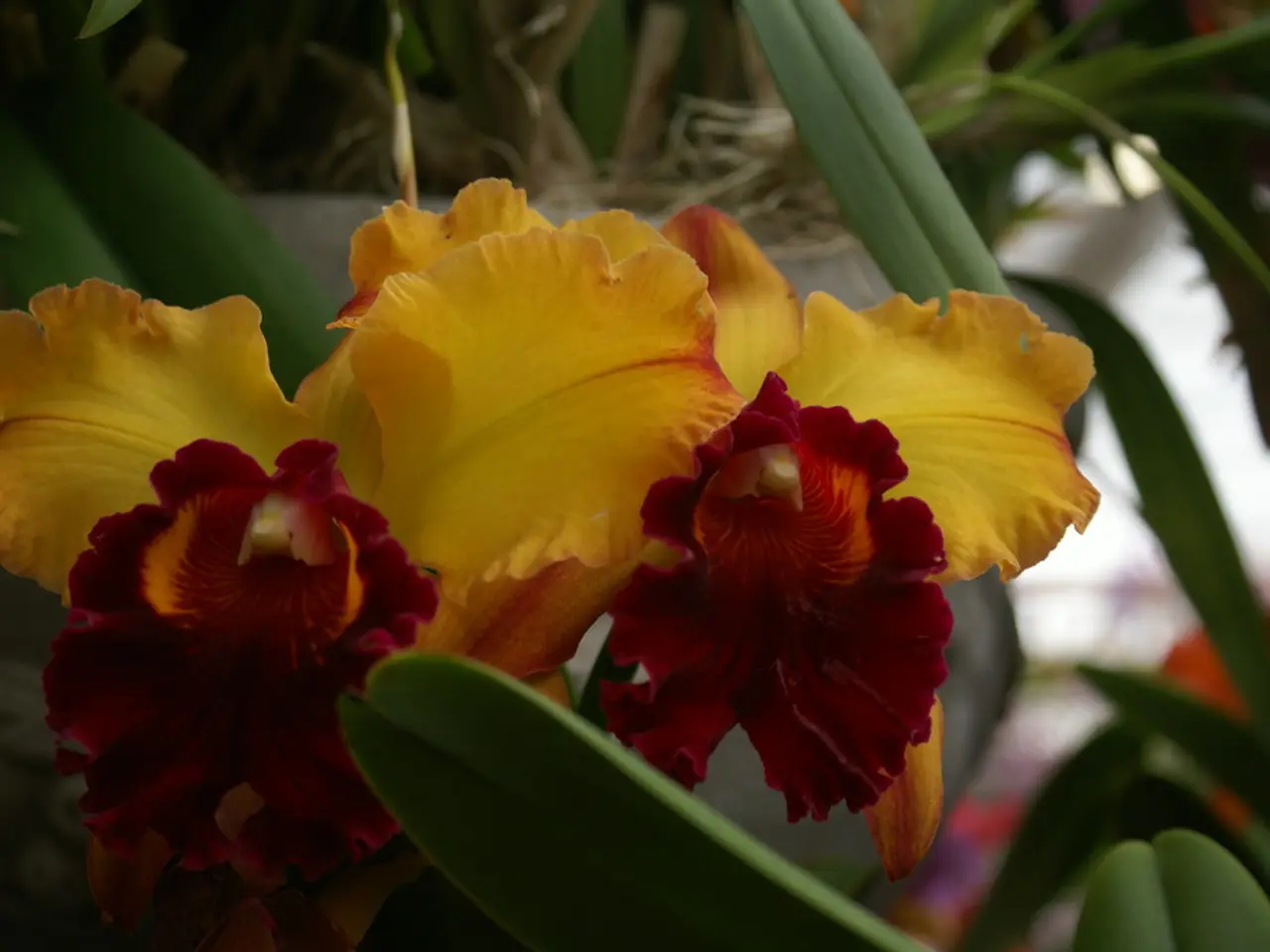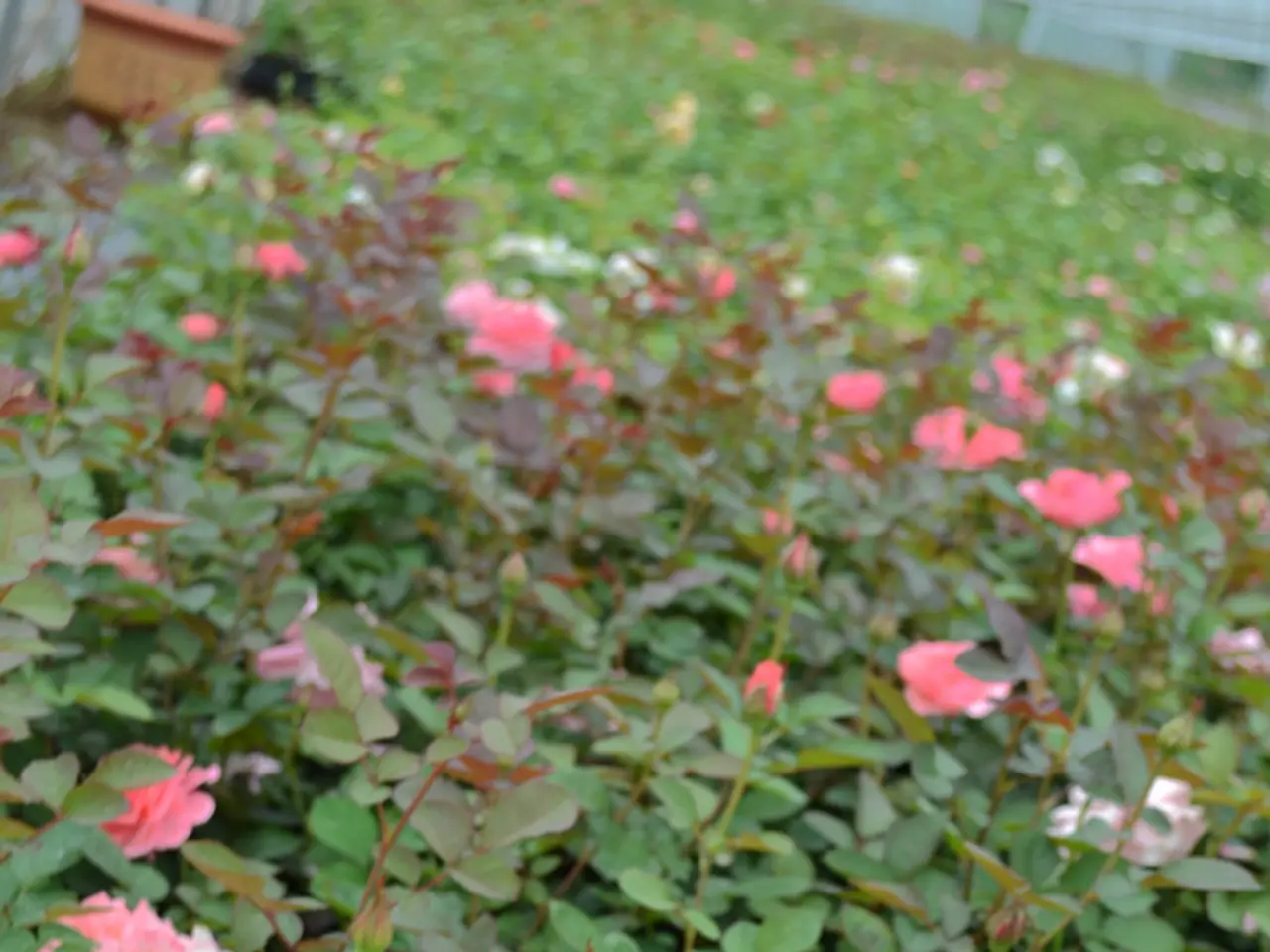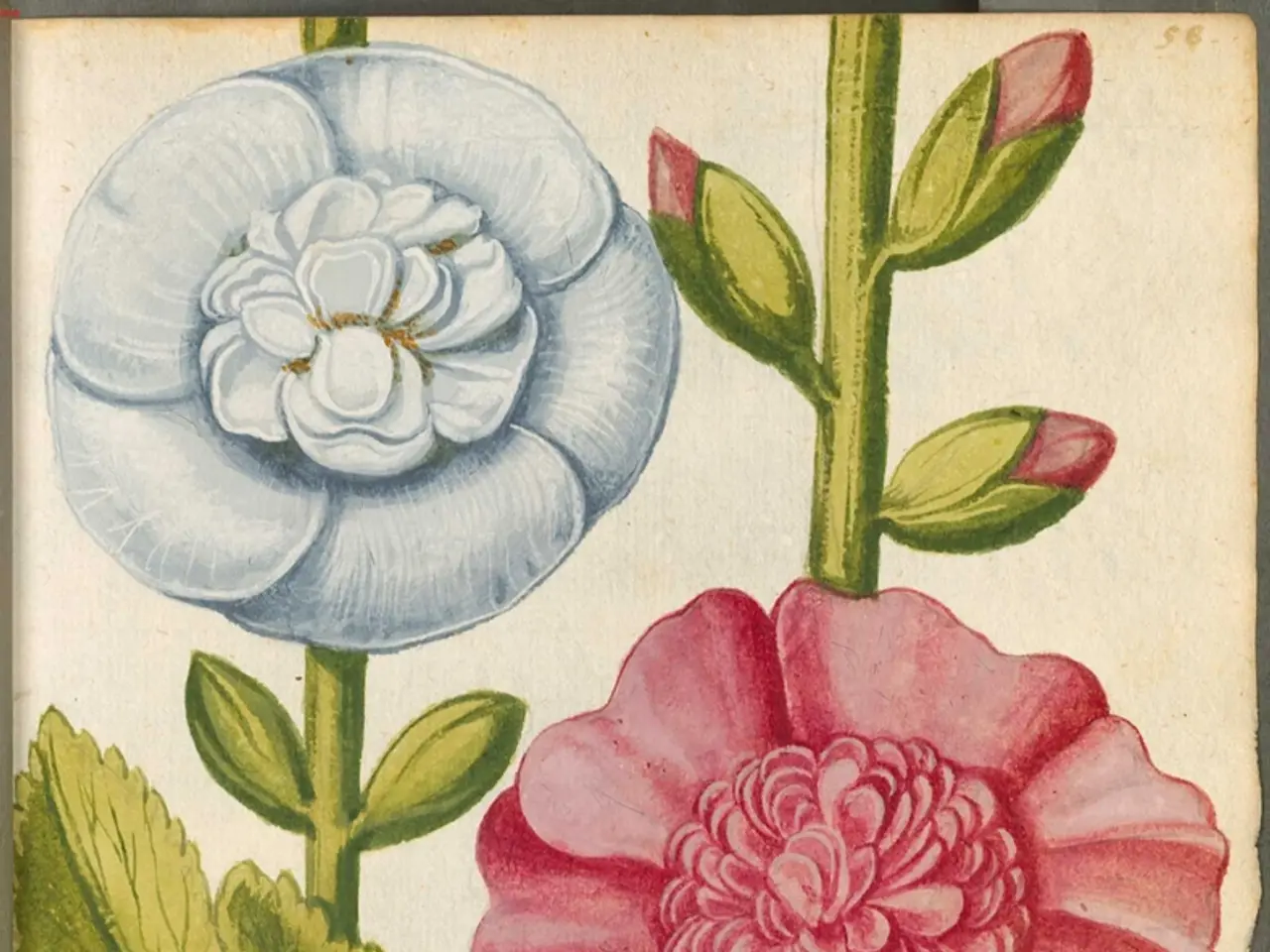Geraniums are exhibiting a yellow hue?
Struggling with a wilted geranium? Fear not! With a few simple adjustments to your plant care routine, you can help your geranium bounce back to life and thrive.
Geraniums, known for their bright, colourful blooms, can sometimes appear sad due to various issues, such as poor watering practices, inadequate sunlight, and poor drainage. Here's a breakdown of the most common reasons for withering in geraniums and how to address them.
Firstly, watering issues are a common culprit. Overwatering can lead to root rot due to constantly wet soil, suppressing blooming and causing stress to the plant. Conversely, underwatering, especially in hot weather, can result in wilting. To ensure your geranium receives the right amount of water, check the moisture level about 2 inches deep in the soil. Geraniums require less water during cooler or wet conditions and dormancy in winter.
Secondly, geraniums need at least six hours of direct sunlight daily to thrive. Insufficient light leads to poor blooming and weak plants that may wither.
Thirdly, poor drainage can also cause problems. Using containers without drainage holes or soil that remains soggy can cause root rot, leading to plant stress and withering.
If your geranium shows signs of being root-bound, it's essential to repot it into a larger container with breathable materials such as terra cotta, which helps moisture escape and promotes healthier root growth. Signs of root-bound geraniums include restricted growth, visible roots, wilting or stunted growth, soil drying too quickly, and visible roots growing out of drainage holes.
To maintain the health and vibrancy of your geraniums, regular feeding with a balanced, water-soluble fertilizer is recommended during the growing season. Additionally, incorporating organic matter into the soil can improve its structure and nutrient availability. Regularly removing spent flowers (deadheading) redirects energy to new blooms and helps plants maintain vigor, indirectly supporting nutrient use efficiency.
A solution prepared with "Gumat" can help address issues caused by a lack of iron and microelements in geraniums. To prepare the fertilizer, take "Gumat" on a spoon, dissolve it in a small amount of water, and then add water to the desired volume. Using this fertilizer can boost the immunity of geraniums and promote more profuse blooming.
In summary, ensuring good sunlight exposure, appropriate watering, well-draining soils with proper container choice, and regular fertilization with deadheading will help your geraniums thrive with vibrant blooms and minimal issues such as withering or root binding. By following these guidelines, you'll be on your way to enjoying a beautiful, flourishing geranium garden!
Caring for a geranium's lifestyle, home-and-garden wise, involves adjusting watering practices, ensuring adequate sunlight, and providing well-draining soil to prevent issues like root rot and encourage blooming. Using a balanced fertilizer and Gumat-based solution can also support geranium health, encourage more blooms, and minimize problems such as iron deficiency.




